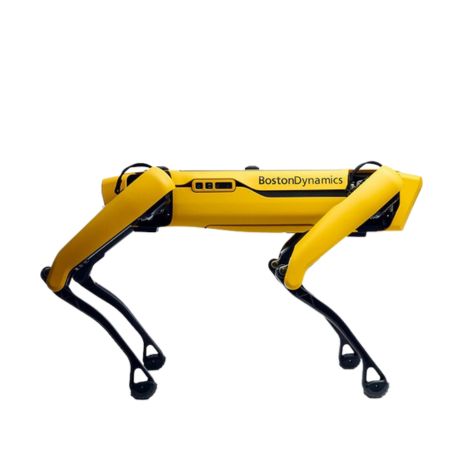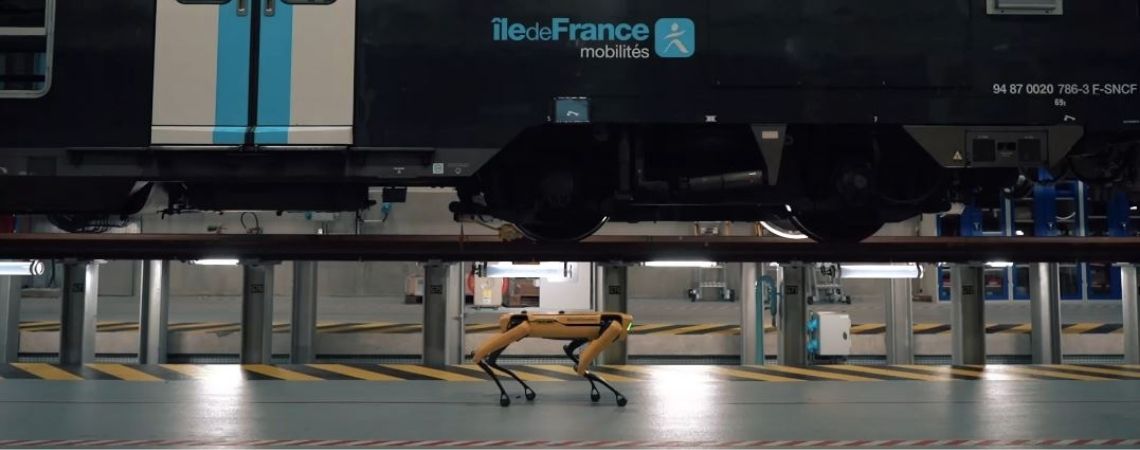To make life easier for its employees, SNCF regularly tests robotics solutions already available on the market in addition to customised robotic platforms, to see how they may serve the railway industry. Trains, and the railway network in general, must be constantly monitored and inspected to carry out maintenance tasks and ensure user safety.
In March 2022, SNCF called on Génération Robots to find out whether the Spot robot could effectively carry out inspections on double-decker Transilien trains.
Why Spot?
Spot is designed to be able to move up and down stairs, unlike mobile wheeled robots.
Its functionalities can be easily enhanced using various add-ons (payloads):
- Colour vision in low-light conditions
- SDK access and custom application development
- Panoramic view
- Etc.
Particularly agile and robust, it is capable of climbing up and down stairs, either autonomously or by remote control:
- Max. payload: 14 kg
- Average runtime: 90 min.
- Max. step height: 300 mm
It is a robust, highly agile and versatile robot that can accomplish a wide range of tasks:
- Exploration
- Surveillance and security
- Inspection
- Mapping
What could Spot do for SNCF?
- Train disinfection
- End-of-line passenger presence control
The test and conclusions
The aim was to test Spot in a real-world environment, in double-decker Transilien trains (Z2N) at the Saint-Pierre-des-Corps industrial technical centre.
The team on site consisted of Mathis Godard, robotics engineer at Génération Robots, Louis-Romain Joly, head of the Robots & Humans programme, and Clara Cussaget, robotics engineer at SNCF’s Technology, Innovation and Group Projects Department.
The robot was perfectly capable of moving around both levels of the trains’ coaches and carrying out its inspection tasks with its camera. However, the seats are set just 60 cm apart, whereas Spot needs 65 cm to move around autonomously (with the obstacle detection feature activated).
Tests performed:
- Passage of the robot between two vertically placed pallets to determine the minimum width required (65 cm)
- Fastening of a water-filled canister on the robot to see if the water’s movement affected that of the robot (no)
- Going up and down steps to see if the robot moves at the same speed as on a flat surface (possible)
Conclusion:
A four-legged robot is perfectly suited to such an environment and to inspections of double-decker trains. Unfortunately, Spot’s current dimensions are incompatible with the Transilien Z2N trains.
Update July 2024: the firmware of the Spot robot is frequently updated. If the Spot robot were to undergo the same tests again now, there would be significant progress in their success.
Spot Enterprise Package

- 14 kg payload
- 360° perception with its 5 pairs of cameras
- Speed of 5.7 km/h
- 90 minutes of autonomy
- ±30° climbing capacity

